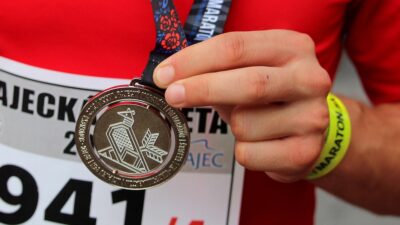As winter yields to spring, athletes around the world sharpen their focus, prepare their bodies, and refine their strategies in anticipation of track season. For elite athletes, competitive track events are the culmination of years of training, discipline, and relentless pursuit of excellence. But what truly distinguishes the champions from the rest? It’s a blend of speed, strategy, mental fortitude, and meticulous preparation.
The Importance of Speed
At the core of track and field is, undoubtedly, speed. For sprinters, achieving peak performance includes not just raw speed but also the efficiency of movement. Elite athletes tailor their training regimens to enhance their acceleration, top speed, and speed endurance.
Plyometrics and Strength Training
Speed training often begins with plyometrics—exercises that utilize explosive movements to enhance power and agility. Box jumps, hurdle drills, and sprint drills improve fast-twitch muscle fibers essential for sprinters. Coupled with strength training, these exercises build muscle capacity and improve overall running mechanics.
Technique Over Haul
Speed doesn’t solely rely on natural talent; it demands perfecting running mechanics. This includes stride length and frequency, arm movement, and posture. Coaches use video analysis to help athletes identify areas for improvement, ensuring that each stride maximizes efficient movement toward the finish line.
The Role of Strategy
While speed is critical, elite athletes know that a winning race often comes down to strategy—how they plan to execute their race day performance. This involves understanding their opponents, pacing themselves correctly, and employing tactics learned through experience.
Race Planning
Every race requires a distinct strategy based on factors such as distance, weather conditions, and competition level. For instance, a 100-meter sprinter focuses on explosive starts, while a 400-meter runner must balance speed with pacing. Athletes often break down their races into segments, setting specific goals for each phase, allowing them to adjust as needed during the competition.
Mental Conditioning
Mental preparation is equally vital. Athletes engage in visualization techniques, imagining themselves running at their optimal speed and achieving their desired outcome. This mental rehearsal builds confidence and prepares them to handle the pressures of competition. Guided relaxation and mindfulness practices further enhance focus and composure.
Nutrition and Recovery
Preparation for track season isn’t confined to the track. Nutrition and recovery play significant roles in an athlete’s performance.
Fuelling the Body
An elite sprinter’s diet often includes a balanced mix of carbohydrates, protein, and healthy fats. Carbohydrates fuel energy during intense workouts, while proteins repair muscle tissues post-training. Hydration cannot be understated; adequate fluid intake helps maintain peak performance, especially during early-season races held in warmer conditions.
Recovery Techniques
Recovery strategies are as diverse as training methods. Many athletes utilize active recovery techniques, such as light jogging or yoga, to promote blood flow and healing. Ice baths, foam rolling, and sports massage therapy further aid in muscle recovery and injury prevention. The importance of sleep cannot be overlooked; a well-rested athlete performs better on race day, both mentally and physically.
The Role of Coaches and Support Teams
Athletes do not navigate their preparation alone. The support of coaches, trainers, and sports nutritionists is crucial. Coaches provide personalized training regimens, ensuring athletes are aware of their strengths and weaknesses. Trainers guide them through proper injury prevention exercises, while nutritionists help tailor meal plans to individual needs.
An Evolutionary Process
As track season approaches, the preparation process evolves. Athletes transition from strength and endurance-focused training in the off-season to speed-specific tactics closer to their first competitions. Communication between athletes and their coaching staff becomes paramount, adjusting training based on progress and recovery metrics.
Conclusion
Preparing for track season is a complex interplay of speed, strategy, and holistic wellness. Elite athletes exhibit discipline and resilience, focusing not only on their physical capabilities but also on the mental aspects of racing. With each race, they apply lessons learned, continually refining their approach to achieve success. As gunshots echo across tracks worldwide, athletes embody the relentless pursuit of excellence, armed with their training, strategy, and an unyielding drive to be the fastest on the track.



